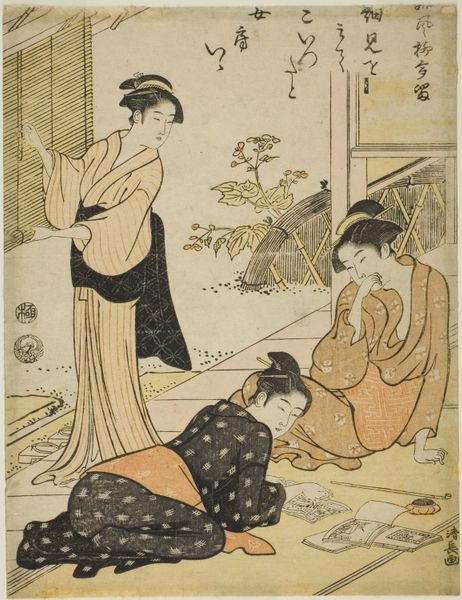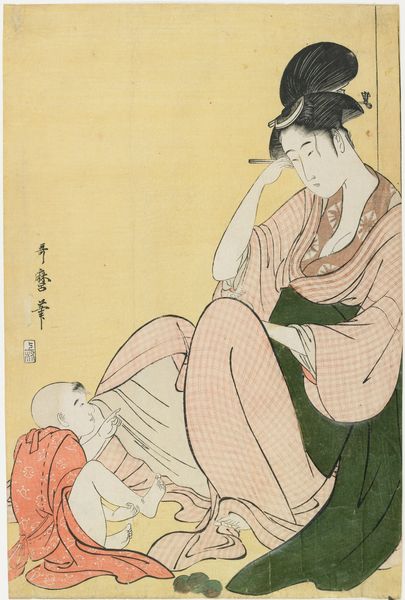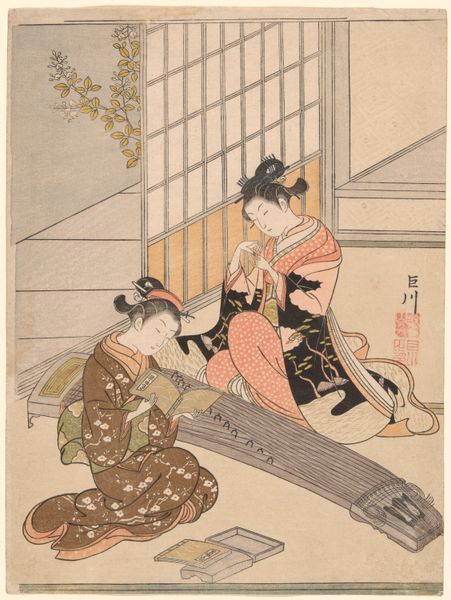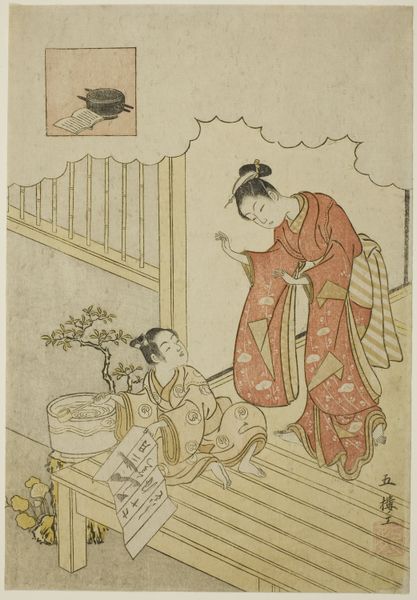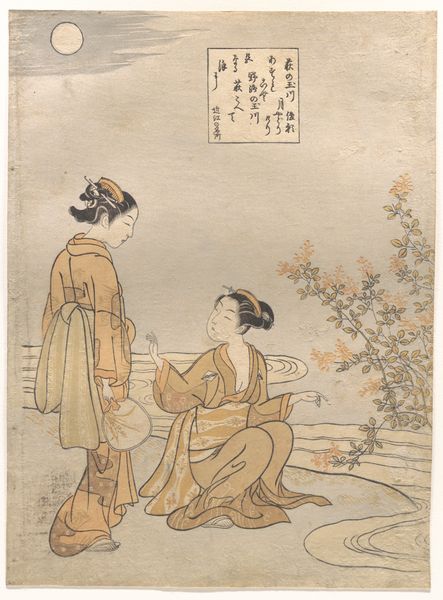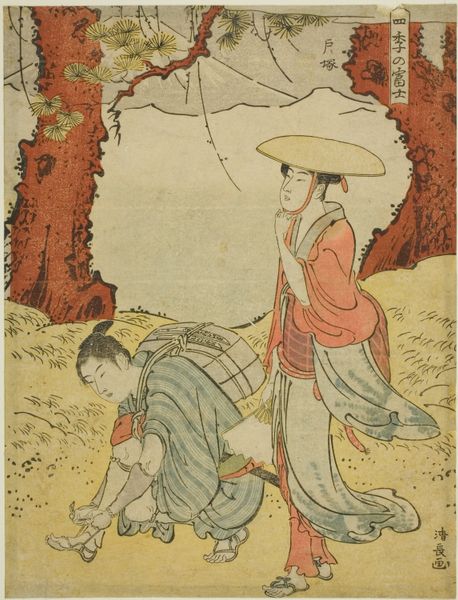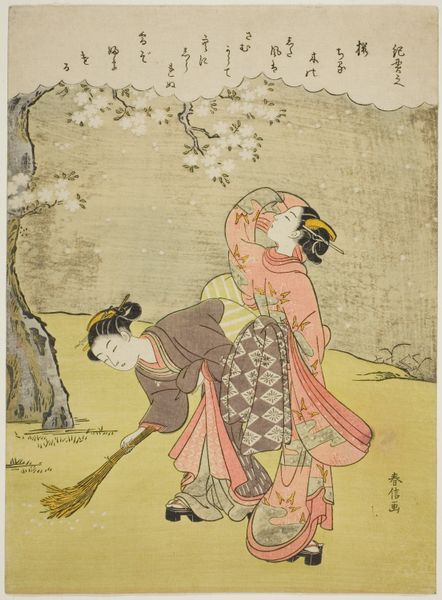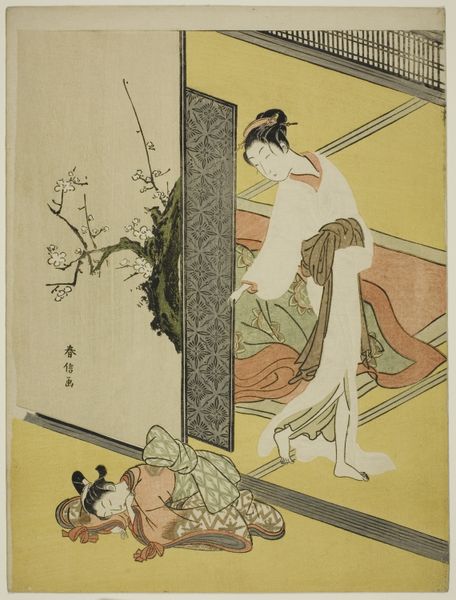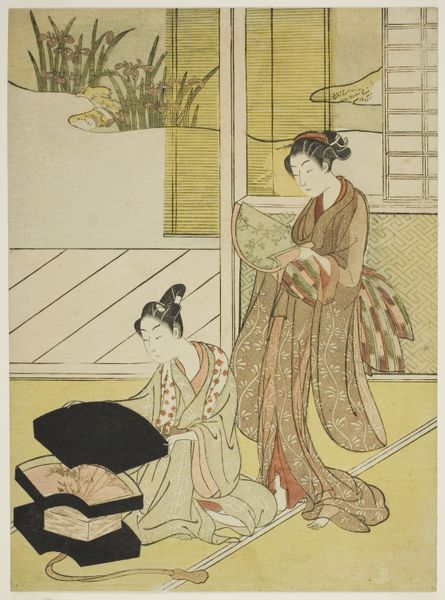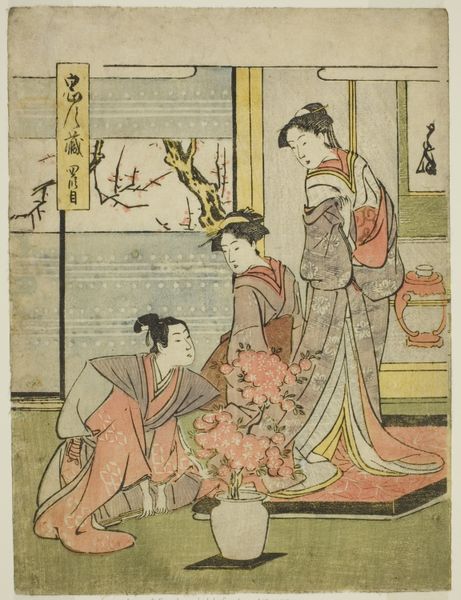
Poem by Mibuno no Tadami, from an untitled series of Thirty-Six Immortal Poets c. 1767 - 1768
0:00
0:00
print, woodblock-print
#
portrait
#
narrative-art
# print
#
asian-art
#
ukiyo-e
#
figuration
#
woodblock-print
#
genre-painting
Dimensions: 28.4 × 21.5 cm (11 1/4 × 8 1/2 in.)
Copyright: Public Domain
Curator: Suzuki Harunobu’s woodblock print, “Poem by Mibuno no Tadami, from an untitled series of Thirty-Six Immortal Poets,” created around 1767-1768 and residing here at the Art Institute of Chicago, depicts a tranquil scene. What strikes you first about it? Editor: It has an almost dreamlike quality, doesn't it? A young woman bends to scoop water, and another, richly robed, stands beside her. There is something melancholy and restrained, a kind of idealized, feminine intimacy, underscored by the willow tree and softly rendered background. Curator: Indeed. Harunobu rose to prominence by designing prints for private commissions. It’s no accident that his works were beloved by the elite because the imagery consistently elevates historical and literary associations for learned viewers. In fact, these Thirty-Six Immortal Poets were critical for codifying and maintaining poetic tradition, influencing Japanese cultural identity for centuries. Editor: So the poetry is essential. In a sense, Harunobu is building on layers of recognized visual and textual iconography. I see a willow tree which typically means flexibility, grace, but also farewell or loss...does that chime with the melancholic feeling I sensed earlier? Curator: Absolutely, these associations resonated strongly with his contemporary viewers and his historical subjects. His compositions—like this example—frequently depict contemporary beauties within recognizable historical contexts, drawing deliberate parallels between the two. It brings into play interesting notions of social status and visibility that shaped his clientele. The role of courtesans and artists like him were to serve those political demands by representing a highly idealized life of women. Editor: So the symbols are almost deployed as strategic shorthands that evoke familiar themes and aspirations. And in turn these associations provide layers for an increasingly self-aware artistic consumer to navigate. Curator: Precisely! A vital component to appreciate how meaning was constructed and disseminated at the time, making this example—like many works by Harunobu— a cornerstone to unpack the political climate of 18th-century Japan. Editor: It's remarkable how Harunobu wove so much complex cultural meaning into such a serene and seemingly simple image. A glimpse into an artfully curated world.
Comments
No comments
Be the first to comment and join the conversation on the ultimate creative platform.

